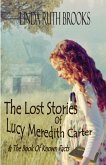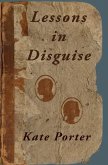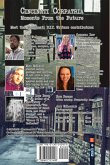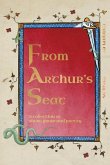Mormon pioneers decided all of Chiricahua County's roads would be set a mile apart going North and South with East and West roads. Making a one mile apart grid. All the roads would be extra wide so a team of horses pulling a loaded wagon could easily turn around. By 1961 several of the roads were paved. San Ramon Road, also called Main Street, is a stretch of road running due north for about eight miles, mostly paved with bumpy, bone-rattling WPA concrete. The pavement starts seven miles south of downtown and ends a mile north of downtown at the point called Bum's Jungle, the location where the San Gabriel and the Gila rivers used to meet. San Ramon itself is one mile square. The Methodist Church is San Ramon's southern city limit. Across the road from the Methodist Church is old man Fisher's little farmhouse. He was a decorated war hero during World War One. He was also the town dentist until he retired in 1953. Continuing a few blocks north of the Methodist Church on the west side of the road is the San Ramon public school. Just north of the San Ramon public school is the Mormon Church, the big- gest building in San Ramon. Across the street from the Mormon Church is Minnie's Mexican Food and Ed Hailey's full-service Shell gas station. On the east side of the road lies San Ramon's first post-World War Two neighborhood, Chula Vista Place. The San Ra- mon town hall, police department and court house are located on the east side of San Ramon Road. Across from the Shell gas station are the older neighbor- hoods. The City of San Ramon Public Library, and the public swimming pool are located on the western edge of San Ramon city limits. The West Side of Main Street: The main business district starts with Chiricahua Feed & Seed on the west side of Main Street, San Ramon Road. Next to the feed and seed store is the Chiricahua County Savings & Loan building, the only building in 1961 downtown San Ramon that's constructed of adobe. The VFW, a popular watering hole for the veterans is next door. Every November on Founder's Day the VFW cook a whole pig in their barbeque pit behind the hall next to the parking lot. El Rancho is another watering hole that caters primarily to Mexican clientele. One door north is Alfredo's grocery store, Sepulveda's clothing store, Carter's barber shop, Ted's Tavern, Cody's Rexall Drugstore, Doctor Donavon's office, a television re- pair shop with no name, and the Freedom Market. The East Side of Main Street: We start at Dupre's auto and tractor repair and Mobile station across from Chiricahua Feed & Seed. Henry, his daughter Cloris, and his five sons are considered the best mechanics in southern Arizona. Just north of Dupre's auto repair is Eddie Fang's grocery store, the smallest of the three stores in San Ramon on the corner of Main Street and Connor Street. It is owned and operated by Charlie and Mary Wong and they didn't have any idea who Eddie Fang was. On the north side of that intersection is Allen Baird's auto and tractor repair plus machine works for cus- tom metal fabrication. Just north of Baird's is Fulton & Gilmore Lumber & Hardware supply. On the north side of the lumber store is Chiquita's-yeah like the banana-a bar and pool hall. Next to Chiquita's is the San Ramon Auto Supply then there is David and Noreen Western Wear store. After that comes Snow's barber shop, then the US Post Office, Laverta's Beauty Saloon that sits on the corner of Main Street and Elm Street, directly across the street from the Freedom Market. Across Elm Street is a building that was originally a theater for movies during the forties and fifties. Since 1958 it has been a place for teenagers to meet and play pinball machines, pocket pool, or snooker. Two blocks north of where the kids hang out, the furthest busi- ness north of town is Jake's Café.







